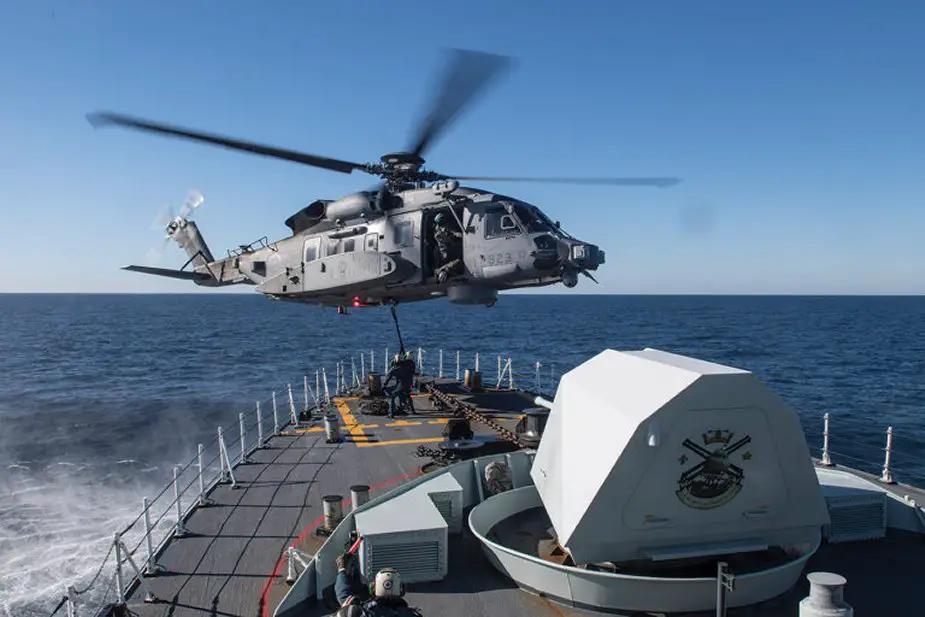According to information published by CNN on November 3, 2023, a Chinese Shenyang J-11 fighter jet discharged flares in close proximity to a Canadian Sikorsky CH-148 Cyclone helicopter over international waters.
Follow Navy Recognition on Google News at this link
 Sikorsky CH-148 Cyclone helicopter on maneuvers with a Halifax-class frigate. (Picture source: Canadian Navy)
Sikorsky CH-148 Cyclone helicopter on maneuvers with a Halifax-class frigate. (Picture source: Canadian Navy)
The Canadian Sikorsky CH-148 Cyclone helicopter, operating from the Halifax-class frigate HMCS Ottawa, was conducting an anti-submarine warfare mission when it encountered the Chinese People’s Liberation Army Navy J-11 fighter jets.
Aircraft Involved
The Canadian Sikorsky CH-148 Cyclone, a maritime helicopter designed for anti-submarine warfare, was involved in routine operations from the deck of the HMCS Ottawa, a Halifax-class frigate of the Royal Canadian Navy. The Cyclone is equipped with sophisticated sensors and systems for submarine detection and is not typically armed with offensive weapons.
The Chinese aircraft was identified as a J-11 fighter jet, a variant of the Russian Sukhoi Su-27. The J-11 is a twin-engine, all-weather, multi-role fighter capable of air superiority and ground attack missions. It is known for its agility and speed, making it a formidable aircraft in intercept missions.
Maneuver and Risks
The J-11, a capable air superiority fighter, discharged flares in close proximity to the Canadian helicopter. This action, typically reserved for evading heat-seeking missiles, presented multiple risks.
The flares could have been ingested by the helicopter's engines or interfered with the rotor system, potentially leading to mechanical failure. Additionally, the bright light from the flares could have visually impaired the helicopter pilots, compromising their ability to maintain control.
The proximity of the encounter, with the J-11 approaching within 100 feet of the Cyclone, was a clear deviation from established safety protocols that dictate a safe distance to avoid collision and misinterpretation of intentions.
The turbulence generated by the jet's close flight path also posed a significant risk to the helicopter, which relies on the stability of its rotor system for lift and maneuverability. Such turbulence can induce a vortex ring state, a dangerous condition where the aircraft can lose lift and control.



